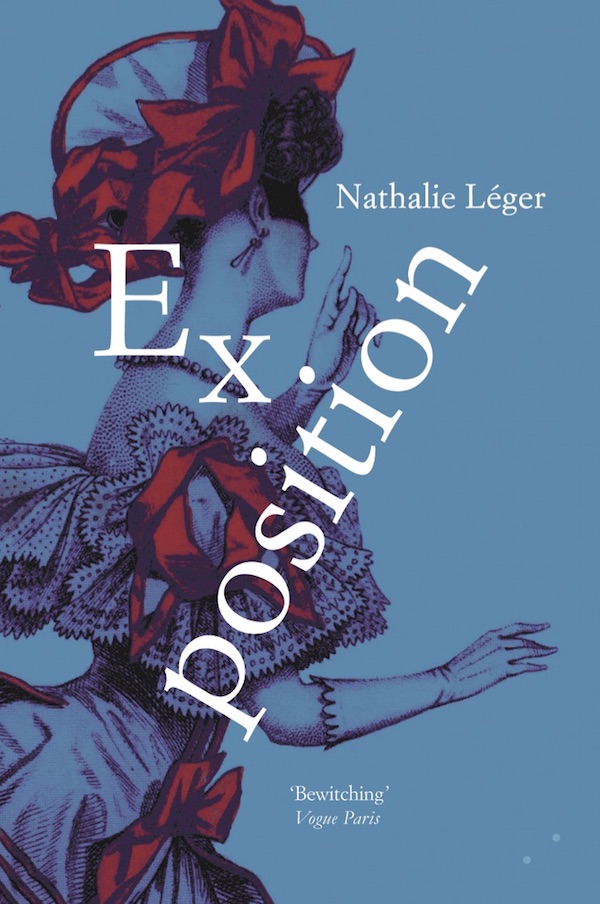Nathalie Léger: Exposition review – mysteries, rumours and facts | reviews, news & interviews
Nathalie Léger: Exposition review – mysteries, rumours and facts
Nathalie Léger: Exposition review – mysteries, rumours and facts
A complex meditation on identity, beauty and artistic representation

Nathalie Léger’s superbly original Exposition is a biographical novel meditating on the nature of biography itself. Its plot – if indeed its 150 pages of intense reflection bordering continuously on stream of consciousness can be called a plot – is an account of the life of Virginia Oldoïni, better known as the Countess of Castiglione.
Any book describing the life of the Countess of Castiglione, whether non-fiction, fiction or the curious mix of the two that it is here, is constantly vulnerable to the risk of relaying gossip. Castiglione was, after all, a highly significant and well-known figure in the French salons of the latter half of the nineteenth century: famous for her beauty, she was for some time a mistress of Emperor Napoleon III. The danger would thus be to become too fascinated with the many popular narratives surrounding Castiglione and forget about the woman herself. Léger, though, is well aware of this, and Exposition is in many ways a homage to the person behind the reputation, irrespective of whom she may have taken as her lover. By focusing on the photos of Castiglione taken by Pierre-Louis Pierson, Léger draws insights from what they hide or reveal about the life and identity of such an enigmatic figure.
 But just as much as we learn facts, consider rumours and encounter mysteries in the life of Castiglione, the figure that slowly comes to prominence is the narrator herself. What Léger proves to her reader is that within every biography there is autobiography. This is a highly stylised, highly self-reflexive, highly Woolfian biography that reveals as much about the identity and obsessions of its narrator as it does about the Countess. As we are told at a poignant moment towards the end (where the narrator is examining one of the many images of Castiglione), ‘I don’t know what of it is her and what is me’.
But just as much as we learn facts, consider rumours and encounter mysteries in the life of Castiglione, the figure that slowly comes to prominence is the narrator herself. What Léger proves to her reader is that within every biography there is autobiography. This is a highly stylised, highly self-reflexive, highly Woolfian biography that reveals as much about the identity and obsessions of its narrator as it does about the Countess. As we are told at a poignant moment towards the end (where the narrator is examining one of the many images of Castiglione), ‘I don’t know what of it is her and what is me’.
Léger’s book (in DeMarco’s translation) is not what one would call an easy read. At its most fundamental level, it is an intellectual and emotional examination of identity, feminine beauty and representation, all the while remaining a fascinating piece on the nascent practice of photography in the nineteenth century. All this is told in fragments through an ekphrastic, occasionally erratic style. But this stream-of-consciousness-esque narrative draws us in, places us alongside the narrator and ensures that her obsession becomes our own.
It would be a challenge indeed for anyone to read this book and not seek out photos of Castiglione. But it is similarly challenging to forget the book’s author. One wonders just how autobiographical it really is, wonders if the photos of Castiglione are not a form of mirror enabling the narrator – and perhaps Léger – to ask questions about her own life.
- Exposition by Nathalie Léger trans. Amanda DeMarco (Les Fugitives, £12)
- Read more book reviews on theartsdesk
The future of Arts Journalism
You can stop theartsdesk.com closing!
We urgently need financing to survive. Our fundraising drive has thus far raised £49,000 but we need to reach £100,000 or we will be forced to close. Please contribute here: https://gofund.me/c3f6033d
And if you can forward this information to anyone who might assist, we’d be grateful.

Subscribe to theartsdesk.com
Thank you for continuing to read our work on theartsdesk.com. For unlimited access to every article in its entirety, including our archive of more than 15,000 pieces, we're asking for £5 per month or £40 per year. We feel it's a very good deal, and hope you do too.
To take a subscription now simply click here.
And if you're looking for that extra gift for a friend or family member, why not treat them to a theartsdesk.com gift subscription?
more Books
 'We are bowled over!' Thank you for your messages of love and support
Much-appreciated words of commendation from readers and the cultural community
'We are bowled over!' Thank you for your messages of love and support
Much-appreciated words of commendation from readers and the cultural community
 Robin Holloway: Music's Odyssey review - lessons in composition
Broad and idiosyncratic survey of classical music is insightful but slightly indigestible
Robin Holloway: Music's Odyssey review - lessons in composition
Broad and idiosyncratic survey of classical music is insightful but slightly indigestible
 Thomas Pynchon - Shadow Ticket review - pulp diction
Thomas Pynchon's latest (and possibly last) book is fun - for a while
Thomas Pynchon - Shadow Ticket review - pulp diction
Thomas Pynchon's latest (and possibly last) book is fun - for a while
 Justin Lewis: Into the Groove review - fun and fact-filled trip through Eighties pop
Month by month journey through a decade gives insights into ordinary people’s lives
Justin Lewis: Into the Groove review - fun and fact-filled trip through Eighties pop
Month by month journey through a decade gives insights into ordinary people’s lives
 Joanna Pocock: Greyhound review - on the road again
A writer retraces her steps to furrow a deeper path through modern America
Joanna Pocock: Greyhound review - on the road again
A writer retraces her steps to furrow a deeper path through modern America
 Mark Hussey: Mrs Dalloway - Biography of a Novel review - echoes across crises
On the centenary of the work's publication an insightful book shows its prescience
Mark Hussey: Mrs Dalloway - Biography of a Novel review - echoes across crises
On the centenary of the work's publication an insightful book shows its prescience
 Frances Wilson: Electric Spark - The Enigma of Muriel Spark review - the matter of fact
Frances Wilson employs her full artistic power to keep pace with Spark’s fantastic and fugitive life
Frances Wilson: Electric Spark - The Enigma of Muriel Spark review - the matter of fact
Frances Wilson employs her full artistic power to keep pace with Spark’s fantastic and fugitive life
 Elizabeth Alker: Everything We Do is Music review - Prokofiev goes pop
A compelling journey into a surprising musical kinship
Elizabeth Alker: Everything We Do is Music review - Prokofiev goes pop
A compelling journey into a surprising musical kinship
 Natalia Ginzburg: The City and the House review - a dying art
Dick Davis renders this analogue love-letter in polyphonic English
Natalia Ginzburg: The City and the House review - a dying art
Dick Davis renders this analogue love-letter in polyphonic English
 Tom Raworth: Cancer review - truthfulness
A 'lost' book reconfirms Raworth’s legacy as one of the great lyric poets
Tom Raworth: Cancer review - truthfulness
A 'lost' book reconfirms Raworth’s legacy as one of the great lyric poets
 Ian Leslie: John and Paul - A Love Story in Songs review - help!
Ian Leslie loses himself in amateur psychology, and fatally misreads The Beatles
Ian Leslie: John and Paul - A Love Story in Songs review - help!
Ian Leslie loses himself in amateur psychology, and fatally misreads The Beatles
 Samuel Arbesman: The Magic of Code review - the spark ages
A wide-eyed take on our digital world can’t quite dispel the dangers
Samuel Arbesman: The Magic of Code review - the spark ages
A wide-eyed take on our digital world can’t quite dispel the dangers

Add comment